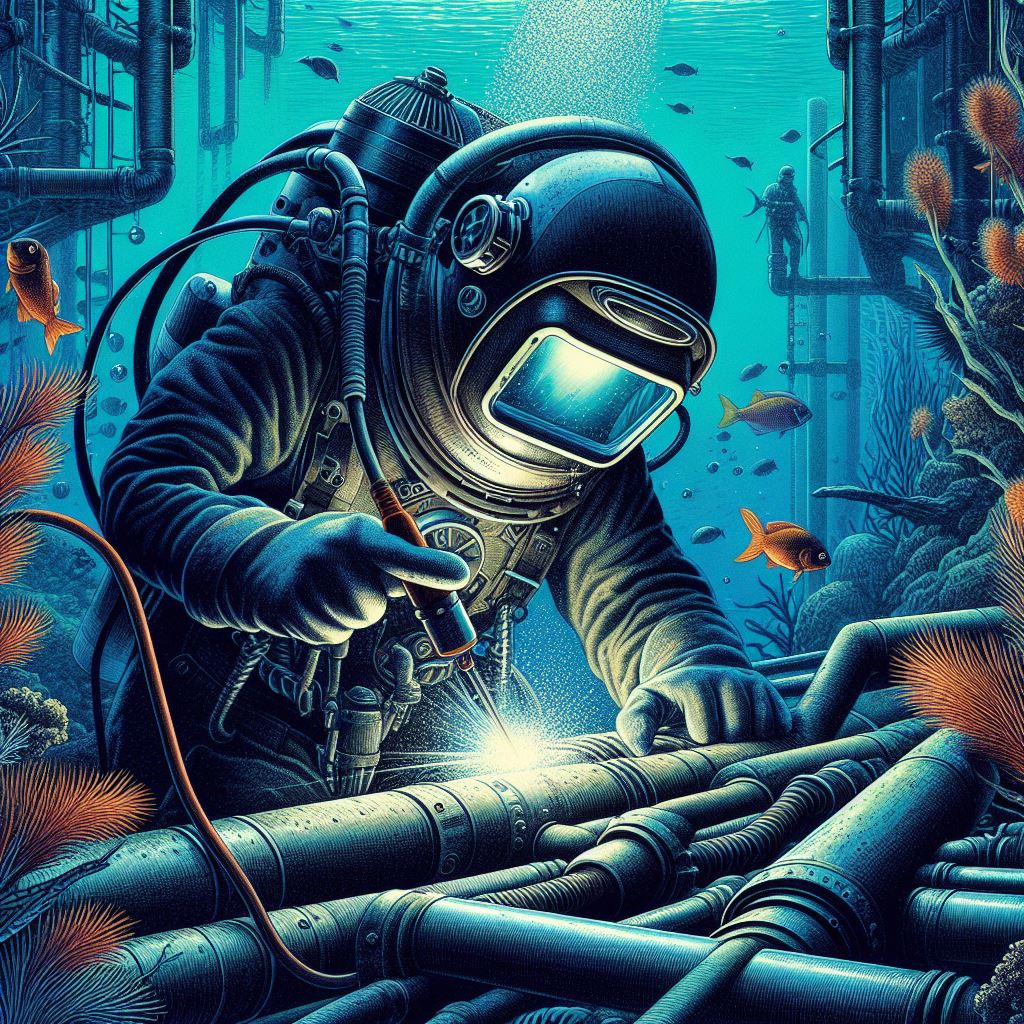Introduction
A. Importance of Welding in the UK
Welding stands as a linchpin in the UK’s industrial landscape, crucial for construction, manufacturing, and infrastructure development.
B. Significance of UK Welding Trends
- Evolving Technology: In 2024, welding undergoes a tech revolution, integrating AI and robotics for precision.
- Sustainable Practices: Green welding gains traction, aligning with the UK’s commitment to environmental responsibility.
- Skills Evolution: A surge in demand for skilled welders prompts training innovations and apprenticeship programs.
- Industry Adaptation: Welding trends not only reflect technological advancements but also respond to dynamic industry needs.
- Economic Impact: As welding evolves, it contributes significantly to the UK economy, fostering growth and job creation.
This blog post delves into the heartbeat of the UK’s welding landscape in 2024, exploring the technological shifts, sustainable strides, and the human factor shaping this dynamic industry.
Current State of UK Welding Industry
In this section, we will provide an overview of the existing welding industry in the UK, highlighting the key industries that heavily rely on welding, and discussing the demand for skilled welders in the country.
A. Overview of the Existing Welding Industry in the UK
- The UK welding industry plays a crucial role in various sectors, contributing significantly to the country’s economy.
- It is an essential part of manufacturing, construction, automotive, aerospace, and oil and gas sectors.
- With a long history of excellence in welding, the UK has established a strong reputation in the global market.
- Welding technology and processes continue to evolve, keeping the industry at the forefront of innovation.
- The industry is known for producing high-quality welded products that meet international standards and regulations.
- Advanced welding techniques and automation have improved productivity and efficiency in the industry.
B. Key Industries that Heavily Rely on Welding
Several key industries in the UK heavily rely on welding for their operations and growth.
- The manufacturing industry uses welding extensively in the production of various goods and equipment.
- For example, welding is crucial in the fabrication of metal structures, machinery, and consumer products.
- Construction companies heavily depend on welding for structural steelworks, pipelines, and infrastructure development.
- Welding is a critical component in the automotive industry, enabling the production of vehicles and their components.
- In the aerospace industry, welding is vital for manufacturing aircraft structures, engines, and other components.
- The oil and gas sector relies on welding for pipeline construction, maintenance, and repair.
C. Demand for Skilled Welders in the Country
The demand for skilled welders in the UK remains high, presenting promising opportunities for individuals in the trade.
- Skilled welders are essential to meet the growing demands of various industries and infrastructure projects.
- There is currently a shortage of skilled welders in the country, creating a significant skills gap.
- Job prospects are excellent for qualified welders, with a wide range of industries actively recruiting.
- Employers are increasingly seeking welders with up-to-date knowledge of advanced welding techniques and technologies.
- Welding apprenticeships and training programs are available to upskill and train individuals in the trade.
- Skilled welders can enjoy competitive salaries and opportunities for career advancement.
In essence, the UK welding industry is thriving and vital to various sectors.
It has a strong reputation for producing high-quality products and continuously embraces innovative technologies.
Key industries like manufacturing, construction, automotive, aerospace, and oil and gas heavily rely on welding.
However, there is a significant demand for skilled welders, and the industry faces a skills gap.
This presents excellent job opportunities for individuals with welding expertise and motivates the need for upskilling and training programs.
Read: The Impact of Brexit on UK Plumbing
Technological Advancements in Welding
Technology is continually evolving in the welding industry, bringing about new developments and improvements that enhance the efficiency and precision of welding processes.
In this section, we will discuss some of the latest technologies being adopted in welding and how advancements in automation and robotics are transforming this field.
1. Adoption of Latest Technologies
- Laser welding: Laser technology offers a high energy density beam, enabling precise and efficient welding.
- Friction stir welding: This solid-state joining process results in stronger welds, especially for aluminum and other non-ferrous metals.
- Electron beam welding: By focusing an electron beam, this method produces high-quality welds with minimal heat-affected zones.
- 3D printing: Additive manufacturing techniques are increasingly used in welding to create complex metal structures.
- Augmented reality: Welders can utilize AR headsets to visualize the welding process in real-time, improving accuracy and reducing errors.
2. Advancements in Automation and Robotics
The integration of automation and robotics has revolutionized the welding industry, leading to increased productivity and improved safety.
Here are some notable advancements:
Personalized UK Career Consulting
Receive tailored career guidance designed just for you. Get actionable steps and expert support to boost your career in 1-3 days. Take control of your career now.
Get Started- Automated welding systems: These systems utilize pre-programmed instructions to perform welding tasks with minimal human intervention.
- Robotics welding cells: Welding robots are designed to work collaboratively with human welders, assisting in repetitive or hazardous tasks.
- Computer-controlled welding machines: Advanced machines with user-friendly interfaces allow precise control over welding parameters.
- Remote welding: Robots equipped with remote sensing and feedback systems can perform welding operations in hazardous or inaccessible environments.
- Machine learning and artificial intelligence: These technologies enable robots to learn and adapt, improving welding efficiency and accuracy over time.
3. Benefits of Technological Advancements
The advancements in welding technologies have several advantages, offering numerous benefits to the industry and welders:
- Increased efficiency: Automated systems and robotics can significantly reduce welding cycle times, leading to higher production rates.
- Enhanced precision: Advanced technologies enable accurate positioning and consistent weld quality, minimizing rework and waste.
- Improved safety: Automation eliminates or reduces the need for human involvement in dangerous or hazardous welding tasks.
- Higher productivity: With automation taking care of repetitive tasks, welders can focus on more complex aspects, optimizing overall productivity.
- Reduced costs: Technology-driven advancements result in reduced material waste and lower energy consumption, positively impacting project costs.
Generally, technological advancements in welding have brought about significant transformations, making the welding process more efficient, precise, and safe.
The adoption of laser welding, friction stir welding, and electron beam welding, among others, has improved the quality of welds.
Moreover, the integration of automation, robotics, and advanced control systems has increased productivity, accuracy, and safety in the welding industry.
These advancements offer numerous benefits, including increased efficiency, enhanced precision, improved safety, higher productivity, and reduced costs.
As technology continues to advance, the future of welding looks promising with even more innovative solutions on the horizon.
Read: Commercial vs. Residential Plumbing in UK
Focus on Sustainable Welding
In recent years, there has been a growing emphasis on sustainability in welding practices.
Welding, like many other industries, is taking steps towards eco-friendly materials and techniques to reduce its environmental impact and preserve resources for future generations.
Additionally, governments have been introducing initiatives and regulations to promote sustainable welding.
1. Emphasis on Sustainability
- Welding industry is placing greater importance on sustainable practices to mitigate its environmental impact.
- Manufacturers and welders are striving to minimize carbon emissions and energy consumption.
- Efforts are being made to reduce waste generation and optimize resource utilization.
- Companies are increasingly adopting eco-friendly technologies and materials in their welding processes.
2. Eco-Friendly Materials and Techniques
- Use of recycled materials, such as eco-friendly filler metals, is gaining popularity in welding.
- Recycled filler metals offer comparable performance while reducing the demand for raw materials.
- Alternative welding methods like friction stir welding and laser welding are becoming mainstream.
- These techniques offer greater efficiency, reduced material consumption, and lower environmental impact.
- Advanced coatings and surface treatments are employed to prolong the lifespan of welding equipment.
3. Government Initiatives and Regulations
- Governments worldwide are recognizing the importance of sustainable welding practices.
- Various initiatives are being launched to incentivize businesses to adopt eco-friendly welding techniques.
- Grants and subsidies are provided to promote the use of sustainable materials and technologies.
- Regulations are implemented to enforce proper waste management and emissions control in welding processes.
- Certification programs are established to ensure compliance with sustainable welding standards.
Essentially, the welding industry is witnessing a significant shift towards sustainable practices.
With a focus on reducing environmental impact, manufacturers and welders are embracing eco-friendly materials and techniques.
Governments are also playing a vital role by introducing initiatives and regulations to promote sustainable welding.
By adopting these practices, the industry can contribute to a greener future and create a more sustainable planet for generations to come.
Your Dream Job Starts with a Perfect CV
Get a tailored CV and cover letter that captures your unique strengths and stands out in your industry. Let us help you make an unforgettable first impression.
Get StartedRead: Safety Practices for Carpenters in the UK

Shift Towards Digitalization and Data-Driven Welding
In recent years, the welding industry has witnessed a significant shift towards digitalization and data-driven processes.
With advancements in technology, manufacturers are integrating digital technologies into their welding processes to enhance productivity and efficiency.
A. The integration of digital technologies in welding processes
The integration of digital technologies in welding processes is revolutionizing the industry.
Welding robots equipped with sensors and cameras are being used to monitor weld quality in real-time, ensuring precision and accuracy.
These robots can also detect defects and make necessary adjustments, reducing errors and improving overall weld quality.
B. The use of data analysis and predictive maintenance for optimization
Data analysis has become a crucial aspect of modern welding processes.
The use of data analytics allows manufacturers to analyze large sets of welding data and identify patterns and trends.
This enables them to optimize their welding procedures, resulting in higher efficiency and productivity.
Predictive maintenance is another application of data analysis in welding, where algorithms are utilized to predict equipment failures and schedule maintenance proactively.
C. Benefits of data-driven welding
The benefits of data-driven welding are numerous.
1. Reduced errors
Firstly, it significantly reduces errors and improves weld quality.
By analyzing welding parameters and monitoring in real-time, manufacturers can detect any deviations from the desired parameters and make corrections immediately.
This ensures consistent quality and reduces the need for rework or repairs.
Optimize Your LinkedIn for Success
Boost your LinkedIn profile with a professional bio, keyword-rich headline, and strategic recommendations that attract recruiters. Stand out from the crowd and get noticed.
Optimize Now2. Improved safety
Safety is another area where data-driven welding proves advantageous.
Real-time monitoring of welding processes allows manufacturers to identify potential safety hazards and take appropriate measures to mitigate them.
For example, if the temperature of a weld becomes too high, sensors can trigger an alarm, alerting the operator to take necessary action.
3. Optimize their welding processes
Furthermore, data-driven welding enables manufacturers to optimize their welding processes, resulting in cost savings.
By analyzing data, manufacturers can identify areas of improvement and implement changes to reduce material waste and improve efficiency.
Additionally, predictive maintenance helps avoid costly equipment breakdowns by identifying potential failures in advance.
Digitalization and data-driven welding also promote collaboration and knowledge sharing.
Welding data can be stored and shared electronically, allowing manufacturers to access and learn from each other’s experiences.
This facilitates continuous improvement and innovation within the industry.
However, it is essential to address the challenges associated with digitalization and data-driven welding.
The collection and analysis of large amounts of data require robust cybersecurity measures to protect sensitive information.
Additionally, the integration of digital technologies may require specialized training for operators to ensure their effective use.
Most importantly, the welding industry is undergoing a significant transformation with the integration of digital technologies and data-driven processes.
The benefits of data-driven welding, including reduced errors, improved safety, and optimization, make it an attractive option for manufacturers.
However, it is crucial to address cybersecurity concerns and provide adequate training to operators to maximize the potential of digitalization in the welding industry.
Read: Historical Evolution of Plumbing in UK
Emerging Trends in Welding Jobs
A. Changing Nature of Welding Jobs in the UK
Welding careers in the UK are evolving rapidly. Job roles once confined to traditional sectors like construction and manufacturing are expanding into new territories.
- Diversification of Industries: Welders are no longer confined to construction sites. Industries like renewable energy, automotive, and even art are seeking skilled welders.
- Integration of Technology: Automation and robotics are reshaping welding tasks. Welders now work alongside machines, requiring proficiency in both traditional techniques and high-tech equipment.
- Environmental Considerations: The surge in green technologies demands welders with expertise in sustainable practices. The emphasis on eco-friendly materials and processes is reshaping welding responsibilities.
B. Demand for Specialized Welding Skills
- Underwater Welding: With the expansion of offshore wind farms, the demand for underwater welding has skyrocketed. Welders skilled in working in submerged environments are highly sought after.
- Aerospace Welding: As the aerospace industry continues to soar, welders with expertise in working with lightweight materials and meeting stringent safety standards are in high demand.
- Additive Manufacturing: 3D printing and additive manufacturing are transforming the industry. Welders proficient in these technologies are becoming invaluable for creating intricate metal structures with precision.
C. Importance of Continual Learning and Upskilling
- Adapting to New Materials: The materials used in welding are constantly evolving. Welders must stay abreast of advancements to effectively work with exotic alloys, composites, and other innovative materials.
- Safety and Compliance: Rigorous safety standards are continually updated. Welders need ongoing training to ensure they adhere to the latest regulations, protecting themselves and the environment.
- Soft Skills: Effective communication and teamwork are becoming as crucial as technical skills. Welders are now expected to collaborate seamlessly with diverse teams and convey complex ideas clearly.
To summarize, the landscape of welding jobs in the UK is undergoing a profound transformation.
Adapting to these emerging trends requires welders to embrace continual learning, diversify their skill sets, and stay ahead in this dynamic field.
Future Challenges and Opportunities in UK Welding
A. Potential Challenges in the Welding Industry
- An aging workforce and a shortage of skilled welders may pose challenges to the industry.
- Technological advancements may require welders to acquire new skills and adapt to changes.
- Environmental regulations and sustainability concerns may impact welding practices and materials.
- Global competition could put pressure on UK welding companies to stay competitive.
- Changing economic conditions and market demands may require flexibility and diversification.
B. Opportunities for Growth and Innovation
- The demand for welding services is expected to increase due to infrastructure development and construction projects.
- Introducing automation and robotic welding can improve productivity and efficiency in the industry.
- Advancements in materials and techniques can provide new opportunities for innovation in welding processes.
- There is potential for growth in renewable energy sectors, such as wind and solar, which require welding expertise.
- Developing advanced training programs can help bridge the skills gap and attract new talent.
C. Initiatives and Programs Supporting the Future of UK Welding
- The Weldability Sif Foundation offers grants and scholarships to individuals pursuing careers in welding.
- The Weldability Sif Academy provides training and certification programs to enhance skills and knowledge.
- The Welding Institute collaborates with industry partners to research and develop innovative welding solutions.
- The UK government invests in apprenticeship programs to support the training and development of welders.
- The Welding and Joining Innovation Centre (WJIC) offers resources and expertise in welding research and development.
The future of UK welding presents both challenges and opportunities.
The industry needs to address the shortage of skilled workers, adapt to technological advancements, and comply with environmental regulations.
However, there are growth prospects in infrastructure development, automation, renewable energy, and innovation.
Initiatives and programs aimed at supporting the future of UK welding play a crucial role in training and developing the workforce and fostering innovation.
With the right strategies and investments, the UK welding industry can overcome challenges and thrive in the coming years.
Conclusion
Throughout this blog post, we have discussed various welding trends that are shaping the industry in the UK in 2024.
These trends include the use of robots in welding, advancements in welding technology, and the growing demand for environmentally friendly welding techniques.
Staying up-to-date with these trends is crucial for welders and businesses alike.
By embracing new technologies and techniques, welders can enhance their skills and remain competitive in a rapidly evolving industry.
It is also important to note the significance of staying informed about the latest welding trends to meet the needs and expectations of customers.
By understanding and incorporating these trends, businesses can provide better quality and more innovative welding solutions.
Looking ahead, the future of UK welding appears promising. The industry is becoming more advanced and sustainable, offering exciting opportunities for both seasoned professionals and newcomers.
By embracing new trends, welders can navigate the changing landscape and thrive in an industry that is constantly evolving.
In the ned, staying up-to-date with the latest welding trends is crucial for success in the UK welding industry.
By continuously learning and adapting to new technologies and techniques, welders can position themselves for a bright and prosperous future.
[E-Book for Sale]
500 Cutting-Edge Tech Startup Ideas for 2024 & 2025: Innovate, Create, Dominate
$19.99 • 500 Tech Startup Ideas • 62 pages
You will get inspired with 500 innovative tech startup ideas for 2024 and 2025, complete with concise descriptions to help you kickstart your entrepreneurial journey in AI, Blockchain, IoT, Fintech, and AR/VR.




